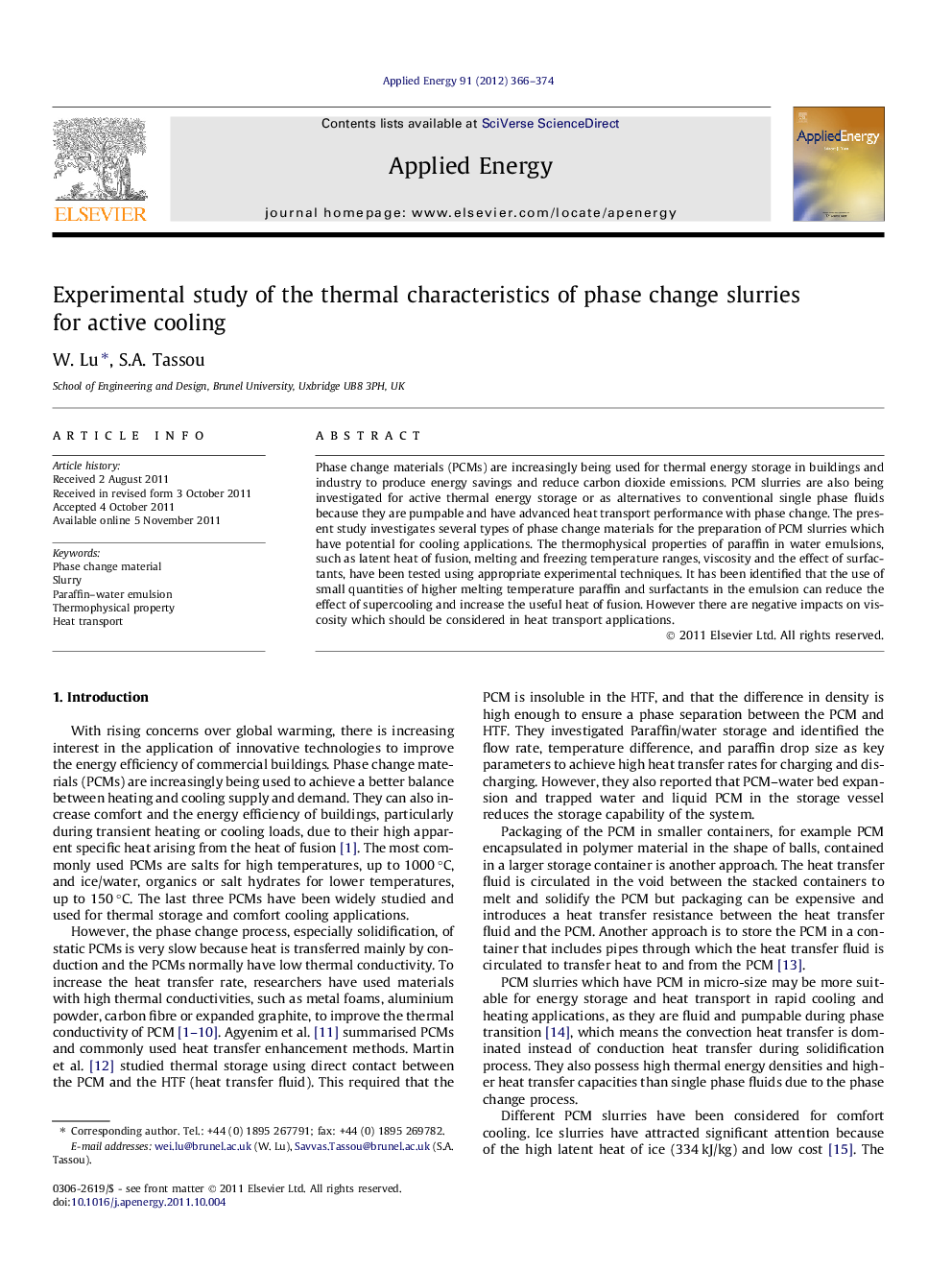| Article ID | Journal | Published Year | Pages | File Type |
|---|---|---|---|---|
| 243746 | Applied Energy | 2012 | 9 Pages |
Phase change materials (PCMs) are increasingly being used for thermal energy storage in buildings and industry to produce energy savings and reduce carbon dioxide emissions. PCM slurries are also being investigated for active thermal energy storage or as alternatives to conventional single phase fluids because they are pumpable and have advanced heat transport performance with phase change. The present study investigates several types of phase change materials for the preparation of PCM slurries which have potential for cooling applications. The thermophysical properties of paraffin in water emulsions, such as latent heat of fusion, melting and freezing temperature ranges, viscosity and the effect of surfactants, have been tested using appropriate experimental techniques. It has been identified that the use of small quantities of higher melting temperature paraffin and surfactants in the emulsion can reduce the effect of supercooling and increase the useful heat of fusion. However there are negative impacts on viscosity which should be considered in heat transport applications.
► Tween 60 and hexadecanol can be employed to produce paraffin-in-water emulsions. ► Paraffin with longer carbon chain than the paraffin in the emulsion can act as nucleate agent to reduce supercooling. ► Increasing the quantity of paraffin increases the viscosity of the emulsion. ► Antifreeze and traces of thickener can cause a significant increase to the viscosity of the emulsion. ► Well prepared emulsions are stable with storage and thermal cycles.
